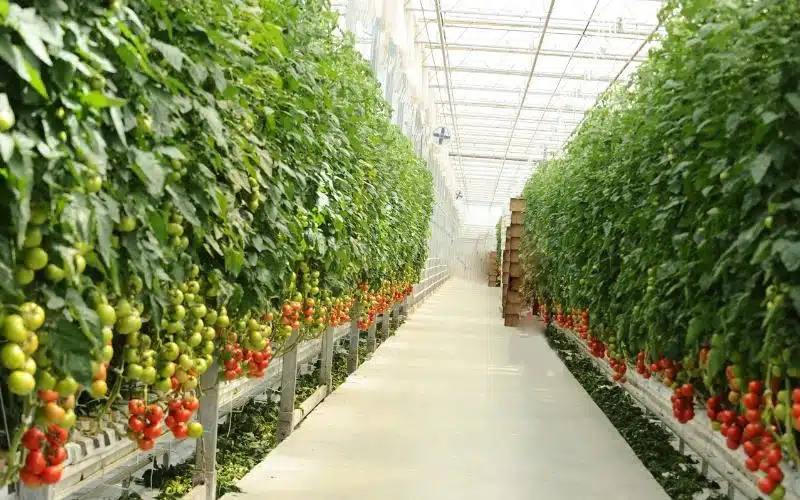
A vertical hydroponic garden is a modern gardening method where plants grow without soil. Instead, a nutrient-rich water solution provides the essential minerals and resources plants need. The setup usually involves a vertical structure, maximizing the use of vertical space and making it ideal for urban gardening or limited spaces. By utilizing technology, a vertical hydroponic garden ensures plants receive optimal conditions for growth, such as controlled water pH, nutrients, and light.
Nutrient solution delivery systems in hydroponics are central to its efficiency. These systems use pumps and pipes to circulate water enriched with essential minerals directly to plant roots. This eliminates the need for soil while providing precise control over nutrient levels, fostering faster growth and higher yields.
Traditional gardening relies on soil to nurture plants. This method has been practiced for centuries, leveraging natural ecosystems to grow crops. Soil provides essential nutrients, supports root systems, and allows plants to anchor themselves.
In traditional gardening, tools like shovels, hoes, and fertilizers are essential. The process often depends on natural factors like weather, rainfall, and sunlight, making it a dynamic but sometimes unpredictable method.
The rise of urbanization and the need for sustainable food production have sparked interest in innovative gardening techniques. Vertical hydroponics addresses challenges like limited space and resource efficiency, while traditional gardening holds value for its simplicity and organic approach. Comparing these methods helps identify which suits different needs, from small urban spaces to expansive rural gardens.
Vertical hydroponics excels in maximizing limited space. By growing plants in stacked layers, this method is ideal for urban environments where horizontal space is scarce. A single square meter can support multiple levels of crops, making it perfect for apartment dwellers or urban farmers.
In contrast, traditional gardening often requires expansive outdoor areas. While it provides ample room for root systems to spread, this method can be challenging in densely populated cities where land is limited.
Water conservation is a hallmark of hydroponics. These systems recycle water, ensuring minimal wastage. Nutrient solutions flow through the system and return to a reservoir, reducing water consumption by up to 90% compared to traditional methods.
Traditional gardening, on the other hand, often relies on irrigation systems or rainfall. While soil can retain water, evaporation and runoff can lead to significant water loss, particularly in arid regions.
Hydroponics often requires artificial lighting, especially in indoor or urban setups. While this ensures consistent growth conditions, it also increases energy consumption. Advances in LED technology have made hydroponic systems more energy-efficient, but the dependency remains.
Traditional gardening leverages natural sunlight, making it inherently energy-efficient. However, maintaining large gardens can involve energy-intensive tasks like tilling and irrigation.
Setting up a vertical hydroponics system requires a significant upfront investment. Equipment like pumps, pipes, reservoirs, and grow lights can be costly. However, pre-built kits simplify the process for beginners.
Traditional gardening demands fewer initial costs. Basic tools, seeds, and fertilizers are affordable, making it accessible to most people.
Hydroponics requires ongoing expenses for electricity, water, and nutrient solutions. Regular maintenance of pumps and systems adds to the cost. However, the precision of hydroponics often results in fewer wasted resources.
In traditional gardening, expenses include fertilizers, pesticides, and irrigation. While these costs are generally lower, they can add up over time, especially for large-scale gardens.
Hydroponics offers faster plant growth and higher yields, providing a quicker ROI for commercial growers. Fresh produce grown in vertical systems can command premium prices in markets.
Traditional gardening offers long-term sustainability. It may take longer to see returns, but the organic appeal of soil-grown crops is a strong selling point.
Vertical hydroponics provides controlled conditions, enabling plants to grow faster. Factors like light, water, and nutrients are optimized, leading to shorter growth cycles.
Traditional gardening is limited by seasonal changes and weather conditions. Growth can slow during unfavorable climates, making it less predictable.
Hydroponics supports dense planting, allowing more crops per square meter. This results in significantly higher yields compared to traditional methods.
Soil-based gardening yields vary based on soil quality, weather, and pest control. While it offers a natural growth environment, the outputs are often lower.
Hydroponics is ideal for leafy greens, herbs, and certain fruits. However, root vegetables and larger plants may not thrive as well.
Traditional gardening supports a wider variety of crops, including trees and root vegetables, making it more versatile for diverse farming.
Hydroponics reduces exposure to soil-borne pests. However, waterborne pathogens can spread quickly if systems aren’t properly maintained.
Traditional gardening faces challenges with soil pests and weeds. While natural ecosystems help balance some pest populations, infestations can be labor-intensive to manage.
Hydroponic growers rely on regular system cleanings and pH monitoring to prevent disease. In soil gardening, crop rotation and organic pest control methods are effective strategies.
Hydroponics is resource-efficient, using less water and fewer nutrients. Its closed-loop systems minimize waste.
Traditional gardening can deplete soil nutrients over time. Composting and crop rotation help maintain soil health but require more effort.
Hydroponics consumes more energy due to artificial lighting and pumps. However, its localized production reduces transportation emissions.
Traditional gardening’s reliance on natural resources gives it a lower carbon footprint, but large-scale farming can lead to deforestation and soil erosion.
Hydroponics uses non-biodegradable materials like plastic pipes, which can impact the environment if not recycled.
In contrast, traditional gardening produces organic waste, which can be composted and returned to the soil.
Both methods require balancing costs, labor, and sustainability to achieve consistent results.
Vertical hydroponics and traditional gardening each offer unique benefits and challenges. Hydroponics excels in efficiency and yield, while traditional gardening provides versatility and organic appeal. Assess your space, goals, and priorities to choose the method that best fits your needs. Both approaches contribute to sustainable and rewarding gardening practices, making the future of gardening a blend of innovation and tradition.
Daftar Agen Toto
presidenttoto
Togel Online
Slot88
Agen Toto

Hello, I’m Rachel Collins. Until recently, I ran my own patchwork quilt business. Having retired from that I have turned my e-commerce site into this blog where I discuss business, home and garden and lifestyle topics for you to enjoy...
Click to read on